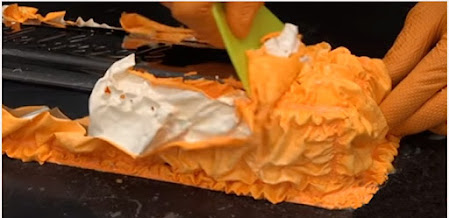Top 5 Mistakes to Avoid When Pickling and Passivating Stainless Steel
In order to protect the quality of your materials and ensure to follow industry standards. In this blog, we'll learn the top 5 mistakes to avoid when pickling and passivating stainless steel.
What Is Pickling and Passivation of Stainless Steel?
Before discussing common mistakes let's review the basics:
Pickling: Pickling is a chemical process that uses acids after heat treatment to get rid of surface pollutants such as oxides, weld scales, and discoloration. It brings back the material's inherent ability to resist corrosion.
Passivation: A procedure that makes stronger stainless steel's natural oxide layer and increases its corrosion resistance. Either citric or nitric acid is usually used.
Both procedures are essential for stainless steel to remain strong, clean, and useful in sectors including construction, chemical manufacture, and food processing.
Importance of Both the Procedure
When stainless steel is handled improperly, it can cause:
Reduced ability to withstand rusting.
Evolution of surface flaws.
Compromised structural soundness.
You can make sure that your stainless steel will continue to be strong, attractive, and safe by avoiding common mistakes.
Skipping Surface Research
The key to successful pickling and passivation is research. Chemical responses may be uneven or inadequate if the surface is not cleaned before treatment.
Why It Occurs:
Failing to clean off dirt, oil, or grease.
Neglecting the pre-cleaning procedures before using acid.
Ways to Prevent It:
Utilize a suitable degreaser to eliminate impurities.
Before using pickling or passivation solutions, thoroughly rinse.
Tip: Always check the surface for residues before beginning any procedure.
Incorrect Chemical Concentration
Inappropriate acid concentrations can cause material damage or ineffective therapy.
Why It Occurs:
Inadequate experience in making chemical solutions.
Miscalculating the amount of strength needed for a specific grade of stainless steel.
Ways to Prevent It:
Observe the chemical concentration recommendations provided by the manufacturer.
For specialized solutions, speak with professionals.
Tip: Always test it on a small area before applying the solution to the entire surface.
Insufficient Time for Reaction
The pollutants may not be completely removed or the protective oxide layer may not form if the procedure is rushed.
Why It Occurs:
Pressure to fulfill strict due dates.
Approximating incorrectly how long chemical processes take.
Ways to Prevent It:
Give the pickling and passivation procedures enough time to finish.
Keep a close eye on the response and make any essential adjustments.
Tip: To assure consistency, set timers and follow a set procedure.
Ignoring Safety Protocols
Strong acids can put personnel in danger and jeopardize the operation if handled carelessly.
Why It Occurs:
Inadequate knowledge or instruction about chemical safety.
Underestimating the risks associated with passivation and pickling solutions.
Ways to Prevent It:
Give employees the appropriate personal protection equipment (PPE), such as gloves, goggles, and clothing that can withstand acid.
To reduce exposure to fumes, make sure the workspace has enough ventilation.
Tip: To enforce best practices, hold frequent safety training sessions.
Inadequate Rinsing and Neutralization
If treated surfaces are not rinsed or neutralized, acidic residues may remain and eventually cause corrosion.
Why It Occurs:
Omitting the last rinse because of time restrictions.
Without applying enough neutralizing agents or water.
Ways to Prevent It:
After pickling and passivation, thoroughly rinse the surface with deionized water.
To remove any remaining acidity, use neutralizing agents as directed.
Tip: After rinsing, check the surface to make sure there is no chemical residue left behind.
Benefits of Avoiding These Mistakes
Increased Durability: The material's capacity to endure hostile situations is guaranteed by proper treatment.
Cost savings: Error prevention lowers the requirement for expensive material replacement or rework.
Aesthetic Appeal: Preserve stainless steel's sleek, sophisticated appearance.
Compliance: Fulfill performance and safety requirements set by the industry.
How to Make Pickling and Passivation Successful
Select the Proper Chemicals: How different grades of stainless steel react to pickling and passivation varies. Make use of goods made especially for your application and material.
Collaborate with Reliable Suppliers: Working with reputable vendors that guarantee that you will receive premium chemicals and knowledgeable guidance specific to your requirements.
Frequent Testing and Maintenance: After treatment, make sure the stainless steel is still free of flaws and resistant to corrosion by performing regular inspections.
Spend Money on Training: Make sure everyone on your staff understands the procedures, safety precautions, and industry norms.
What is the difference between pickling and passivation?
There are two different methods for picking up the check stainless steel: pickling and passivation. Pickling is the process of removing surface pollutants such as oxidation, weld scales, and discolouration brought on by heat treatment by using strong acids like nitric or hydrofluoric acid. By eliminating impurities, this procedure restores the metal's resistance to corrosion.
In contrast, passivation uses milder acids, like citric or nitric acid, to improve the natural oxide layer on stainless steel. This barrier stops more rusting. Passivation increases the surface's resistance to environmental deterioration, guaranteeing durability and long-term performance while pickling cleans and prepares the surface.
Key Takeaways
You can make sure that your pickling and passivation procedures are efficient, safe, and successful by avoiding these common mistakes. Paying close attention to details and following best practices is essential whether you're servicing little stainless steel components or massive industrial equipment.
Working with a reliable supplier assures that you will have access to superior products and knowledgeable advice. In addition to improving the performance of your stainless steel, following these steps will ultimately save you time and money.
Conclusion
To wrap up, pickling and passivation of stainless steel are essential processes to maintain its quality and durability. Time, money, and resources can be saved by avoiding common mistakes such as ignoring safety procedures, retaining the wrong chemical concentration, or omitting surface preparation. By following these professional endorsements and collaborating with reliable suppliers, your stainless steel will remain corrosion-resistant, strong, and aesthetically pleasing for years to come.




Comments
Post a Comment